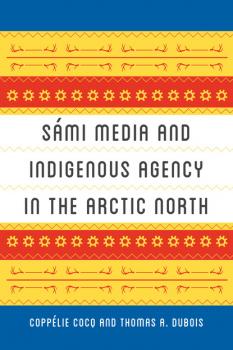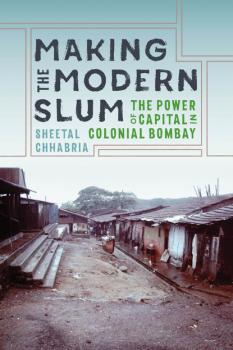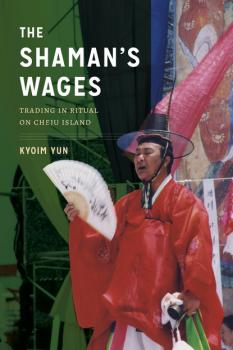Историческая литература
Различные книги в жанре Историческая литератураThe Kongs of Qufu
The city of Qufu, in north China’s Shandong Province, is famous as the hometown of Kong Qiu (551–479 BCE)—known as Confucius in English and as Kongzi or Kong Fuzi in Chinese. In The Kongs of Qufu , Christopher Agnew chronicles the history of the sage’s direct descendants from the inception of the hereditary title Duke for Fulfilling the Sage in 1055 CE through its dissolution in 1935, after the fall of China’s dynastic system in 1911.Drawing on archival materials, Agnew reveals how a kinship group used genealogical privilege to shape Chinese social and economic history. The Kongs’ power under a hereditary dukedom enabled them to oversee agricultural labor, dominate rural markets, and profit from commercial enterprises. The Kongs of Qufu demonstrates that the ducal institution and Confucian ritual were both a means to reproduce existing social hierarchies and a potential site of conflict and subversion.
Chinese Funerary Biographies
Tens of thousands of epitaphs, or funerary biographies, survive from imperial China. Engraved on stone and placed in a grave, they typically focus on the deceased’s biography and exemplary words and deeds, expressing the survivors’ longing for the dead. These epitaphs provide glimpses of the lives of women, men who did not leave a mark politically, and children—people who are not well documented in more conventional sources such as dynastic histories and local gazetteers.This anthology of translations makes available funerary biographies covering nearly two thousand years, from the Han dynasty through the nineteenth century, selected for their value as teaching material for courses in Chinese history, literature, and women’s studies as well as world history. Because they include revealing details about personal conduct, families, local conditions, and social, cultural, and religious practices, these epitaphs illustrate ways of thinking and the realities of daily life. Most can be read and analyzed on multiple levels, and they stimulate investigation of topics such as the emotional tenor of family relations, rituals associated with death, Confucian values, women’s lives as written about by men, and the use of sources assumed to be biased. These biographies will be especially effective when combined with more readily available primary sources such as official documents, religious and intellectual discourses, and anecdotal stories, promising to generate provocative discussion of literary genre, the ways historians use sources, and how writers shape their accounts.
History and Collective Memory in South Asia, 1200–2000
In this far-ranging and erudite exploration of the South Asian past, Sumit Guha discusses the shaping of social and historical memory in world-historical context. He presents memory as the result of both remembering and forgetting and of the preservation, recovery, and decay of records. By describing how these processes work through sociopolitical organizations, Guha delineates the historiographic legacy acquired by the British in colonial India; the creation of the centralized educational system and mass production of textbooks that led to unification of historical discourses under colonial auspices; and the divergence of these discourses in the twentieth century under the impact of nationalism and decolonization.Guha brings together sources from a range of languages and regions to provide the first intellectual history of the ways in which socially recognized historical memory has been made across the subcontinent. This thoughtful study contributes to debates beyond the field of history that complicate the understanding of objectivity and documentation in a seemingly post-truth world.
Sámi Media and Indigenous Agency in the Arctic North
Digital media–GIFs, films, TED Talks, tweets, and more–have become integral to daily life and, unsurprisingly, to Indigenous people’s strategies for addressing the historical and ongoing effects of colonization. In Sámi Media and Indigenous Agency in the Arctic North , Thomas DuBois and Coppélie Cocq examine how Sámi people of Norway, Finland, and Sweden use media to advance a social, cultural, and political agenda anchored in notions of cultural continuity and self-determination. Beginning in the 1970s, Sámi have used Sámi-language media—including commercially produced musical recordings, feature and documentary films, books of literature and poetry, and magazines—to communicate a sense of identity both within the Sámi community and within broader Nordic and international arenas.In more contemporary contexts—from YouTube music videos that combine rock and joik (a traditional Sámi musical genre) to Twitter hashtags that publicize protests against mining projects in Sámi lands—Sámi activists, artists, and cultural workers have used the media to undo layers of ignorance surrounding Sámi livelihoods and rights to self-determination. Downloadable songs, music festivals, films, videos, social media posts, images, and tweets are just some of the diverse media through which Sámi activists transform how Nordic majority populations view and understand Sámi minority communities and, more globally, how modern states regard and treat Indigenous populations.
The Crown and the Capitalists
Despite competing with much larger imperialist neighbors in Southeast Asia, the Kingdom of Thailand—or Siam, as it was formerly known—has succeeded in transforming itself into a rival modern nation-state over the last two centuries. Recent historiography has placed progress—or lack thereof—toward Western-style liberal democracy at the center of Thailand’s narrative, but that view underestimates the importance of the colonial context. In particular, a long-standing relationship with China and the existence of a large and important Chinese diaspora within Thailand have shaped development at every stage.As the emerging nation struggled against colonial forces in Southeast Asia, ethnic Chinese entrepreneurs were neither a colonial force against whom Thainess was identified, nor had they been able to fully assimilate into Thai society. Wasana Wongsurawat demonstrates that the Kingdom of Thailand’s transformation into a modern nation-state required the creation of a national identity that justified not only the hegemonic rule of monarchy but also the involvement of the ethnic Chinese entrepreneurial class upon whom it depended. Her revisionist view traces the evolution of this codependent relationship through the twentieth century, as Thailand struggled against colonial forces in Southeast Asia, found itself an ally of Japan in World War II, and reconsidered its relationship with China in the postwar era.
Making the Modern Slum
In the late nineteenth and early twentieth centuries, Bombay was beset by crises such as famine and plague. Yet, rather than halting the flow of capital, these crises served to secure it. In colonial Bombay, capitalists and governors, Indian and British alike, used moments of crisis to justify interventions that delimited the city as a distinct object and progressively excluded laborers and migrants from it. Town planners, financiers, and property developers joined forces to secure the city as a space for commerce and encoded shelter types as legitimate or illegitimate. By the early twentieth century, the slum emerged as a particularly useful category of stigmatization that would animate city-making projects in subsequent decades.Sheetal Chhabria locates the origins of Bombay’s now infamous “slum problem” in the broader histories of colonialism and capitalism. She not only challenges assumptions about colonial urbanization and cities in the global south, but also provides a new analytical approach to urban history. Making the Modern Slum shows how the wellbeing of the city–rather than of its people–became an increasingly urgent goal of government, positioning agrarian distress, famished migrants, and the laboring poor as threats to be contained or excluded.
The Shaman's Wages
Breaking from previous scholarship on Korean shamanism, which focuses on mansin of mainland Korea, The Shaman’s Wages offers the first in-depth study of simbang , hereditary shamans on Cheju Island off the peninsula’s southwest coast. In this engaging ethnography enriched by extensive historical research, Kyoim Yun explores the prevalent and persistent ambivalence toward practitioners, whose services have long been sought out yet derided as wasteful by anti-shaman commentators and occasionally by their clients.Intrigued by discord between simbang and their clients over fee negotiations, Yun set out to learn the deep-rooted legacy of condemning or trivializing the practitioners’ self-interests, from a neo-Confucian governor’s purge of shrines during the Chosŏn dynasty to the recent transformation of a community ritual into a practice recognized through UNESCO World Heritage status. Drawing on a wealth of firsthand observations, she shows how simbang distinguish ritual exchanges from more mundane instances of bartering, purchasing, bribing, and gift giving and explains why ritual affairs are nonetheless inevitably thorny. This original study illuminates the intertwining of religion and economy in shamanic practice on Cheju Island.
Bronze and Stone
Despite China’s long tradition of venerating the past as the ultimate source of cultural authority, the discourse of antiquity prior to the Song period (960–1279) demonstrated little concern for ancient objects. With a focus on physical artifacts of the past, Song intellectuals began a new discipline, “the study of bronze and stone” ( jinshixue ), that generated collections of items such as bronze vessels and bells, stone steles, and ink rubbings of inscriptions carved or cast on objects. This first comprehensive study in English of the Song antiquarian movement and how it refashioned the distant past uses textual and material evidence to examine this development, which has had long-lasting influence on Chinese intellectual history and on the preservation of material objects. In addition to collecting and comparing artifacts, Song antiquaries compiled extensive catalogs that included drawings, measurements, and meticulous descriptions. Their studies have contributed to the way history has been documented since the eleventh century and serve as a basis for archaeology of the modern period. Bronze and Stone contextualizes the Song antiquarian movement among previous Chinese engagements with antiquity, subsequent popular interest in ancient objects, and world antiquarianism.
Beyond Death
Suicide and martyrdom are closely intertwined with Korean social and political processes. In this first book-length study of the evolving ideals of honorable death and martyrdom from the Chosŏn Dynasty (1392–1910) to contemporary South Korea, interdisciplinary essays explore the changing ways in which Korean historical agents have considered what constitutes a sociopolitically meaningful death and how the surviving community should remember such events.Among the topics covered are the implications of women’s chaste suicides and men’s righteous killings in the evolving Confucian-influenced social order of the latter half of the Chosŏn Dynasty; changing nation-centered constructions of sacrifice and martyrdom put forth by influential intellectual figures in mid-twentieth-century South Korea, which were informed by the politics of postcolonial transition and Cold War ideology; and the decisive role of martyrdom in South Korea’s interlinked democracy and labor movements, including Chun Tae-il’s self-immolation in 1970, the loss of hundreds of lives during the Kwangju Uprising of 1980, and the escalation of protest suicides in the 1980s and early 1990s.
Holy Science
In the early 2000s, as India was emerging as a global superpower, a key development project off the southern Indian coast was thwarted by intense opposition. The construction of a new shipping canal angered Hindu nationalists who sought to protect what they saw as the land bridge built by Hanuman and his monkey army in the Indian epic Ramayana . Environmentalists also protested against the canal, claiming that it severely threatened a fragile and globally important ecosystem. As the controversy grew, the religious and environmental arguments converged, reflecting the evolving relationship between science and religion that marks the hypernationalism of the contemporary Hindu right.Through this case study and others, Banu Subramaniam demonstrates the limitations of the «universality» of science, to reveal how science in postcolonial contexts is always locally inflected and modulated. Evoking the rich mythology of comingled worlds, where humans, animals, and gods transform each other and ancient history, Subramaniam demonstrates how Hindu nationalism sutures an ideal past to technologies of the present by making bold claims about the scientific basis of Vedic civilization and deploying this narrative to consolidate caste, patriarchal, and Hindu power. Moving beyond a critique of this emerging bionationalism, this book explores the generative possibility of myth and story, interweaving compelling new stories of fictionalized beings like the avatars of Hindu mythology into a rich analysis that animates alternative imaginaries and «other» worlds of possibilities.









